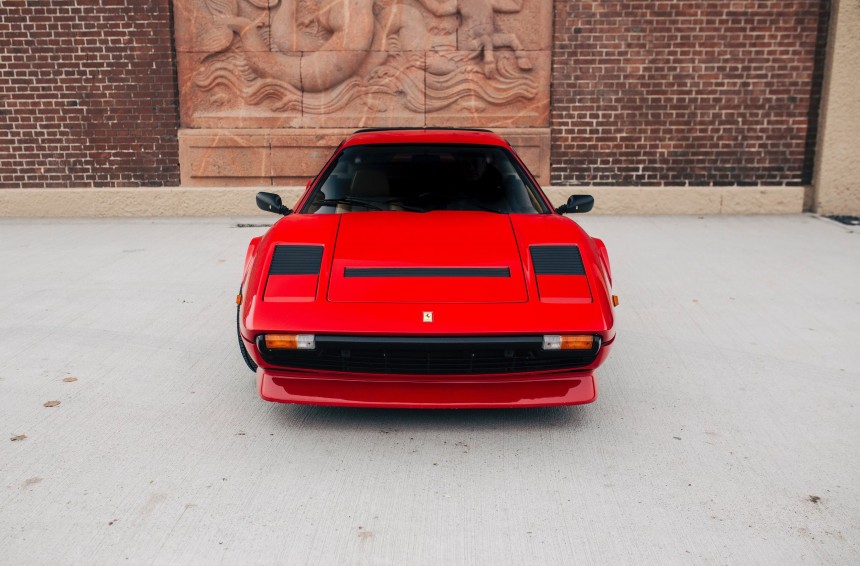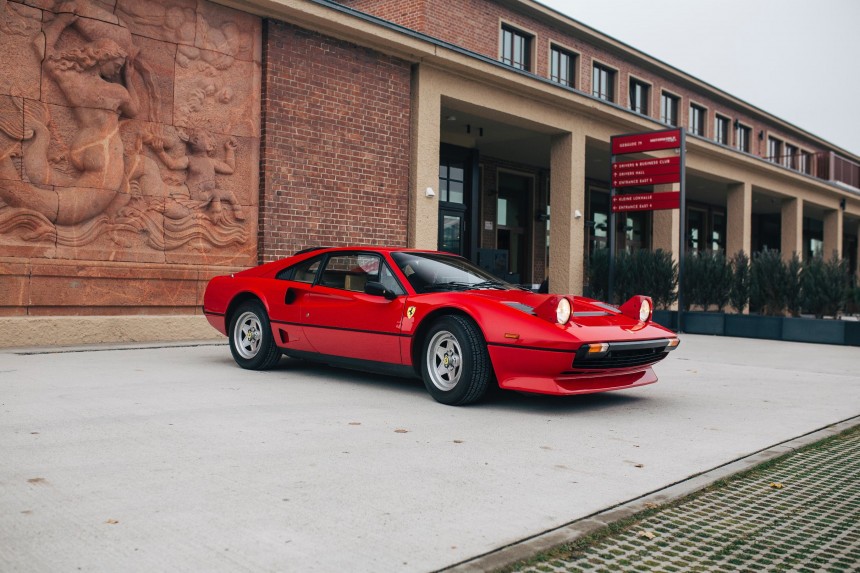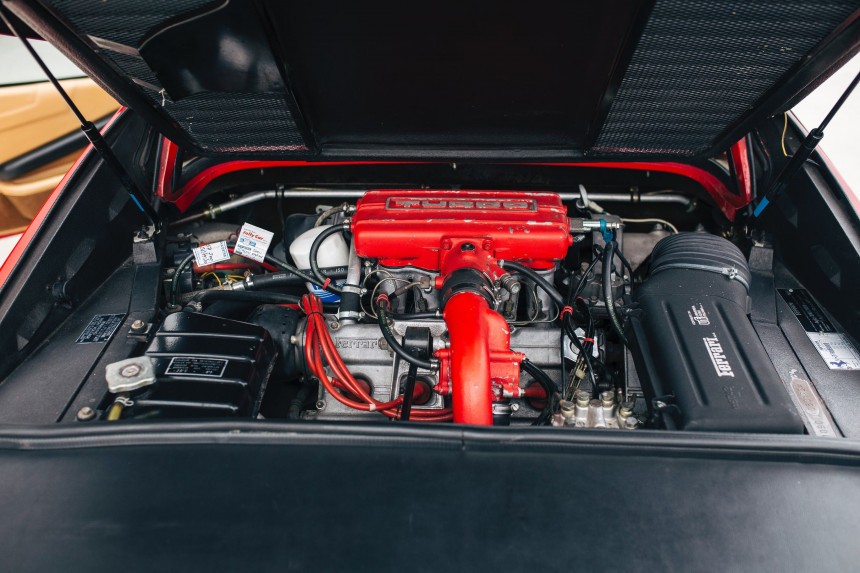It might seem a little strange for us to think of the turbocharger as exotic, but remember, 1962 was more than six decades ago. It’s a ubiquitous technology today, with forced induction found in pretty much everything from a Civic to million-dollar exotics like the McLaren Speedtail.
By their very nature, turbochargers are considerably more efficient than traditional US forced induction technology. Not only do turbos increase power and torque more efficiently than a good supercharger, but that efficiency also results in fewer emissions. Turbocharging also had the side effect of replacing big powerplants with lumpy four-pots, but downsizing used to look very different in the 1970s and 1980s.
Maranello’s Prancing Horse introduced the Dino engine family in the 1960s, which originally comprised 2.0- and 2.4-liter V6 engines. An eight-cylinder sibling displacing 2.9 liters debuted in 1973 in the 308 GT4, followed by a 2.0-litre version of that V8.

Photo: Collecting Cars
Why, though? Incidentally, the 1970s were a period of enormous economic and political turmoil in the Republic of Italy. Social unrest was on the floor due to high levels of inflation and unemployment. The oil crisis of 1973 only worsened the situation. The Italians refer to this period as Anni di Piombo, as Years of Lead.
Politicians on both sides of the divide had to take drastic measures during this time, with one such measure in the guise of an unbelievably high 38 percent value-added tax on automobiles with engines larger than 2, 0 liters It is in this problematic context that Ferrari had to downsize the Dino V8 by reducing the cylinder diameter from 81 to 66.8 millimeters.
Originally used in the Dino 208 GT4, this engine was later used in the Ferrari-branded 208 GT4 codenamed F106C. From 1980 to 1982, the 208 GTB and 208 GTS were the last applications of this naturally aspirated V8, then called the F106CB. In the background, Ferrari was experimenting with turbos. The 126C racing car of the 1981 season was the Scuderia’s first turbocharged single-seater. Until 1984, he accumulated 10 GP wins and two constructors’ titles.

Photo: Collecting Cars
Using lessons learned from the 126C, the Italian team updated the 208 series 2.0-liter V8 with a KKK-supplied turbocharger. Due to the boost pressure, Ferrari lowered the compression ratio from 9.0:1 to 7.0:1 to keep things under control in daily driving scenarios. What difference did the exhaust-driven turbocharger make in the 208 series?
Simply put, it was much better. The naturally aspirated V8 made 155ps at 6,800rpm and 170Nm at 4,200rpm in a car that weighed 1,302 kilograms, with those figures translating to 2,870lbs, 125lb-ft and 153bhp. The 208 GTB in turbo suit was a lighter idea, and its force-fed V8 made 220 hp (217 PS) and 240 Nm (177 lb-ft) when new.
Peak power and torque occurs higher in the rev range, namely at 7,000 and 4,800 rpm, but it was the right upgrade. The Italian manufacturer also took inspiration from the F106D for the intercooled engine in the 328-based GTB Turbo and GTS Turbo that replaced the 208 GTB Turbo and 208 GTS Turbo. The F106D was also instrumental in the development of a legendary homologation special, the twin-turbo 288 GTO, which was eventually replaced by the F40.

Photo: Collecting Cars
Aside from the 208’s turbocharged engine, the Prancing Horse worked its magic on the five-speed manual transmission, changing gear ratios to suit the character of the engine. Embellished with an intake manifold finished in bright red that says TURBO in capital letters, the F106D is electronically ignited by Magneti Marelli. Also worth mentioning is the Bosch K-Jetronic mechanical fuel injection, as well as the transverse layout of the engine.
Unveiled with much pomp and circumstance at the 1982 Turin Motor Show, the 208 GTB Turbo neatly sidestepped the luxury tax imposed on cars with engines over 2.0 litres. That was 20 metric ponies down from the four-valve version of the 308 series, too small a difference to redirect potential Prancing Horse customers to the bigger-engined 308.
The chassis of the 208 Turbo was not too different from its predecessor, although Ferrari used a different codename: F106DB100 for the fixed-head berlinetta and F106DS100 for the targa-head body style as opposed to F160CB100 and F160CS100. Fitted with Campagnolo magnesium alloy wheels, the 208 Turbo came standard with Michelin tires instead of stock Pirelli rubber boots.

Photo: Collecting Cars
The unequal-length wishbones keep every corner under control with the help of anti-roll bars for both ends, Koni telescopic shocks and coil springs. Disc brakes were also standard, with vented rotors and two circuits instead of one for safety. If one of these hydraulic circuits develops a leak, the other is competent enough to stop the vehicle safely.
With a mostly steel body, the 208 Turbo ended production in late 1985. Based around a tubular steel chassis, this horribly underrated model series totaled 687 vehicles, all left-hand drive. . This may seem a little disappointing, but keep in mind that Ferrari developed this companion solely for its domestic market.
437 units were specified as coupes, and the other 250 left the factory as targa-top convertibles. The naturally aspirated 208 of yesteryear is even rarer, with Ferrari building 160 coupes and just 140 targas.


